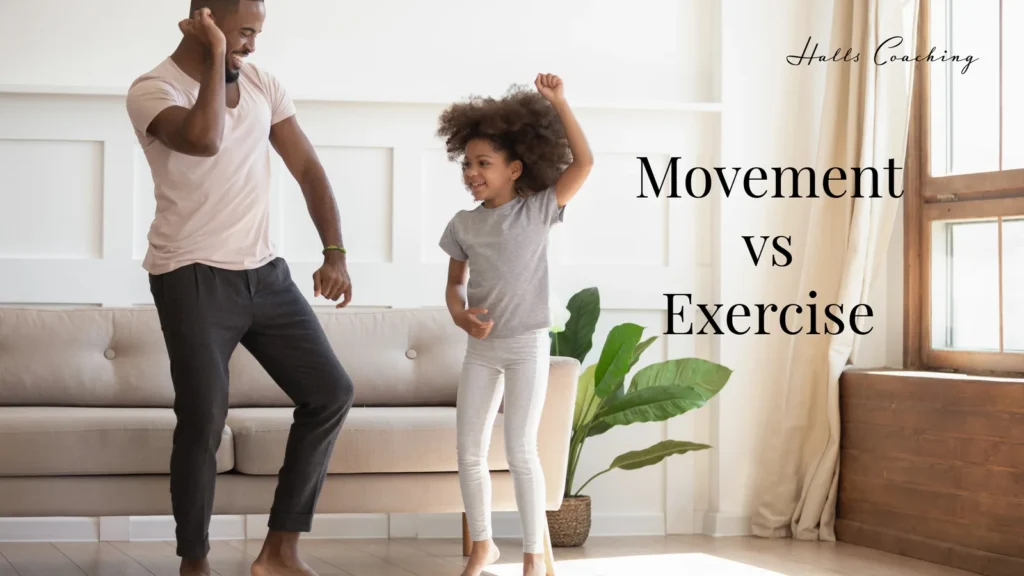
Movement vs. Exercise: What’s the Difference?
Understanding the Vital Connection Between Movement and Exercise for Optimal Health
In today’s fast-paced world, where screen time often dominates our lives, staying physically active has never been more important. Yet, many of us still mix up ‘movement’ with ‘exercise.’ While both play crucial roles in our health and longevity, they each bring something unique to the table. Let’s unravel these concepts together and discover how they can work hand in hand to boost our well-being.
Movement vs. Exercise: What’s the Difference?
At its essence, movement is all about enjoying spontaneous physical activities that keep us engaged. Think about walking, stretching, gardening—yes, even those household chores! It’s like allowing your body to naturally wander and explore without the constraints of a set workout plan. In contrast, exercise involves structured, goal-oriented activities designed to improve specific fitness levels—like hitting the gym for strength training or jogging in the park.
Understanding these two concepts is key. While exercise is vital for building strength and endurance, movement keeps our metabolism humming and helps stave off the risks associated with a sedentary lifestyle.
The Joy of Movement
Movement Can Be Fun and Functional
Daily movement is essential for our health, and guess what? It can actually be enjoyable! Small tweaks to your day can work wonders in boosting your activity levels. Simply moving around for five minutes every hour can counteract the negative effects of too much sitting. Here are a few easy and practical ideas to sneak more movement into your day:
– Walking Meetings: Why sit in a stuffy meeting room when you can stroll outdoors? This simple switch can break the monotonous routine and encourage spontaneous movement.
– Active Breaks: Set a reminder to stand, stretch, or take a brisk walk every 30 minutes. Think of these as movement snacks—like doing ten bodyweight squats or simply stepping outside for a minute. You’d be surprised at the difference it can make.
*Research even suggests that short bursts of movement, such as knocking out ten bodyweight squats every hour, can sometimes offer greater health benefits than one extended workout session.*
Harnessing the Power of Exercise
Intentional Activity for Fitness and Resilience
While spontaneous movement is fantastic for our overall health, focused exercise is where we build fitness and resilience. Planned workouts act like positive stressors, encouraging our bodies to adapt and grow stronger over time.
To maximize the benefits of your exercise routine, try these strategies:
– Mix It Up: Variety is your friend! Incorporate different forms of exercise—whether it’s aerobic workouts, strength training, or flexibility exercises. Keeping things fresh can make it more fun.
– Try High-Intensity Interval Training (HIIT): These brief, intense bursts of exercise can significantly improve your heart health and metabolic function, often surpassing the benefits of longer, moderate workouts.
*Consider “exercise snacks”—short, high-energy bursts of activity, like sprinting up the stairs for a minute. These have been shown to greatly improve health outcomes, including heart fitness and metabolic regulation.*
The Dangers of a Sedentary Lifestyle
Understanding the Risks
Let’s have a real chat about the implications of prolonged sitting. Research shows that spending extended periods in a sedentary position can independently heighten the risk of serious health issues like cancer, cardiovascular disease, and obesity. Being aware of these risks is the first step toward combating the negative effects of our increasingly inactive routines.
So how can we counter this? Here are some effective strategies:
– Choose Active Living: Whenever possible, make standing or walking your default choice. Opt for stairs over elevators and choose to walk instead of driving short distances.
– Set Movement Goals: Commit to a daily step target or a movement goal, and track your progress—fitness apps and wearable trackers can be great accountability partners!
Bringing It All Together
Create a Balanced Lifestyle
1. Make Movement a Priority: Look for ways to naturally add spontaneous movement to your day—like standing during phone calls or joining a walking group. Even small adjustments can make a big difference!
2. Craft a Thoughtful Exercise Plan: Your workout routine should include both aerobic and strength-training exercises. Don’t shy away from those high-intensity efforts—it’ll pay off!
3. Balance Movement and Exercise: Aim for a harmonious mix of structured workouts and spontaneous movement throughout your day to ward off health risks associated with too much sitting.
Tips to Get Started
– Set a Movement Schedule: Plan movement snacks into your day! Even quick stretches or a brisk walk during your breaks can keep you active.
– Involve Others: Grab friends or family for a fun activity! Joining local clubs or classes can help build a supportive community that keeps you motivated.
Conclusion
By embracing both movement and structured exercise, you’re paving the way for a healthier lifestyle. Recognizing how these two elements complement each other can help you kick those sedentary habits to the curb, boosting your physical and mental well-being.
Now that you know the differences between movement and exercise, what will you do next? I’d love to hear your thoughts or questions in the comments below. Let’s encourage one another to lead healthier and happier lives!
Hashtags: #movement #exercise #health #these #like #spontaneous #fitness #make #active #walking #even #strength #training #risks #sedentary
